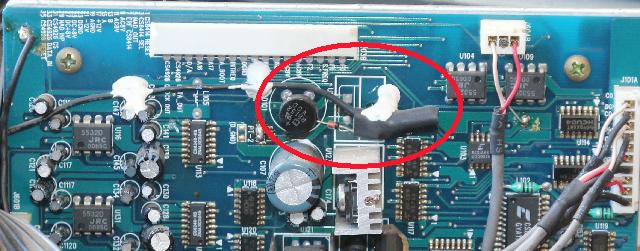The patient: A NAD T751 Surround-Sound amplifier.
The symptom: You turn it on, it thinks about it for about ten seconds and turns itself off.
The cause: Well, the gnomes over at NAD built in a whole bunch of self-test diagnostics into the microcontroller. If the output transistors draw too much current, or there’s DC on the speaker lines, or… anything else, really… the system shuts down. One would hope to think that it also emits an error code of some type somewhere, but if it does it’s not documented where I could find it.
So the first step is of course to check the output transistors. This… is a mission. But after taking the whole damn thing apart I came to the conclusion that the transistors were just dandy. Not the problem.
OK, a preliminary google indicates that the protection system is likely to be the cause. Dried out capacitors and the like. Looking at the schematic, the Load board is a likely culprit, so I replaced all the caps on there. No change.
A lot more googling got me this page, and Andrew’s comment two thirds of the way down is the solution. There’s a bodge factory modification on the AC3 board that looks like it checks that the AC power is present. If the capacitor (Andrew claims 2.2 uF, I had 3.3 uF fitted) is buggered, the bodge doesn’t work and the amp powers itself down.

New cap fitted and all is well. Now the question is whether I tell the customer that the T-751 can’t be fixed, and keep it… because damn it sounds good.